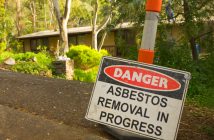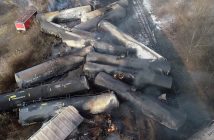AWS takes a closer look at a 2019 study on welding fume and lung cancer, from a New Zealand and Australian perspective

In 2017 the International Agency for Research on Cancer (IARC) reclassified welding fume from ‘possibly carcinogenic to humans’, as was its position from 1989, to ‘carcinogenic to humans’. The reclassification of welding fume by the IARC was qualitative in nature and was the result of a systematic review of all available literature published on the subject. The recent Honaryar statistical analysis published in 2019, instead quantifies the risk of lung cancer, and explores exposure and effect associations through a quantitative and statistical analysis.
The two studies, qualitative and quantitative, taken together send a clear and important message to welders and those who employ welders in Australia and New Zealand. Recognising welding fume as carcinogenic and the increased lung cancer risk faced by welders should encourage the welding industry to introduce or reassess control measures to better protect their workers.
How workplace exposure standards work in New Zealand and Australia
The exposure standards in Australia and New Zealand ‘do not identify a dividing line between a healthy or unhealthy working environment’. ‘Therefore, exposure standards should not be considered as representing an acceptable level of exposure to workers. They establish a statutory maximum upper limit’. All safety professionals should therefore keep up to date with studies such as these and also stay informed about the exposure standard changes in different countries that are considered relevant. Alerts issued or lowering of
an occupational exposure limit (OEL) in another jurisdiction can be the trigger to install an internal OEL used in a company to give the exposed workers the protection they deserve.
What is the employer’s responsibility?
The employer has the primary responsibility to ensure that welders, as far as reasonably practicable, are not exposed to health and safety risks whilst performing their job. The employer can achieve this by introducing engineering or administrative controls such as extract ventilation and the use of personal protective equipment (PPE) such as welding powered air purifying respirators (PAPR).
Based on the reclassification of welding fume and this recent 2019 meta-analysis, all employers of welders should consider reviewing their risk assessments for welding activities and revise where necessary their control measures to protect those undertaking welding activities.
‘You must ensure that air monitoring is carried out to determine the airborne concentration of a substance or mixture at the workplace to which an exposure standard applies if:
• you are not certain on reasonable grounds whether or not the airborne concentration of the substance or mixture at the workplace exceeds the relevant exposure standard, or
• monitoring is necessary to determine whether there is a risk to health’.
For expert guidance on air monitoring in Australia and New Zealand, please contact the Australian Institute of Occupational Hygienists or the New Zealand Occupational Hygiene Society, as appropriate.
Under both the Australian Work, Health and Safety Laws and the New Zealand Health and Safety at Work Regulations, a person who directs the carrying out of work (eg. employer) at a workplace must provide PPE to workers carrying out work unless the personal protective equipment has been provided by another person conducting a business or undertaking, like a labour hire company.
As an employer, once you have selected the appropriate PPE, ‘you must provide the worker with information, training and instruction in the proper use and wearing of that PPE’3. Proper guidance should be given on the storage of equipment and care and maintenance guidelines should be clear and adhered to.
For help on selecting suitable respiratory protection for your specific welding application, or training and
instruction on the proper use, fitting, or care and maintenance of your welding PPE, please contact AWS.
What is a welder’s responsibility?
The key is to remember that the risk is real but keeping yourself safe is simple. There is a risk associated with scuba diving and you wouldn’t dream of doing it without the proper safety equipment. The same is true with welding. If the proper precautions are taken and followed, welding can be a safe occupation.
When selecting suitable PPE, the employer, where reasonable, should consult with the welders. A welder’s knowledge, experience and personal preferences improve the overall decision-making process.
As someone who is directly affected by welding hazards, welders are entitled to take part in the consultation process and selection of suitable PPE. Personal preferences are the key to user acceptance – so look for gear that you feel comfortable wearing.
As a welder you should aim to educate yourself on the risks, understand the appropriate PPE available and look to involve yourself in the consultation process and ultimate selection of suitable PPE.
What respiratory PPE should be worn by welders?
In most cases, PPE must be worn by workers when welding to supplement higher levels of controls such as ventilation systems or administrative controls’.
In the 2017 Occupational Cancer Risk Series on Welding released by the Cancer Council they advised that welders should ‘wear either air supplied or air purifying respiratory protection’4 and use ‘a full face welding helmet, with a UV filtered lens’4 as well as suitable clothing, welding gloves and welding boots.
The Health and Safety Executive (HSE), is the government body responsible for the encouragement, regulation and enforcement of workplace health, safety and welfare, and for research into occupational risks in Great Britain.
In February 2019, HSE released a health bulletin regarding the reclassification of welding fume. With immediate effect, they stipulated that there is no known level of safe exposure to welding fume and current control methods such as general ventilation, will not be deemed acceptable. They declared that where controls are not adequate or not present that appropriate and effective respiratory protective equipment is to be provided and used.
What’s happening in Australia and New Zealand?
The world has shifted to more of a health and safety focus—the result of court cases and research.
A large number of Australian and New Zealand companies are now completely changing their stance on welders’ PPE. The 2017 reclassification of welding fume as carcinogenic prompted many to rethink and challenge what was historically considered ‘normal’.
The 2019 statistical analysis concluding that welders have a ‘43% increased risk of lung cancer’ regardless of the type of steel welded, the welding process or time period is of serious public health relevance and should promote change to better protect welders in Australia, New Zealand and around the world.




